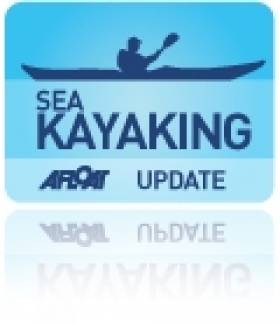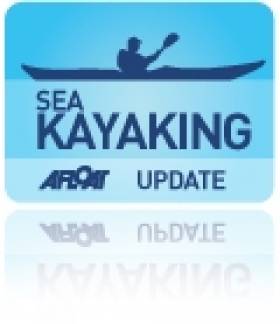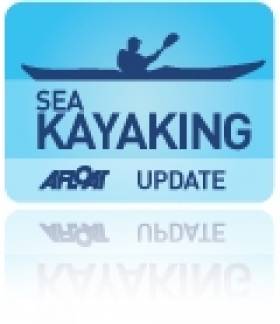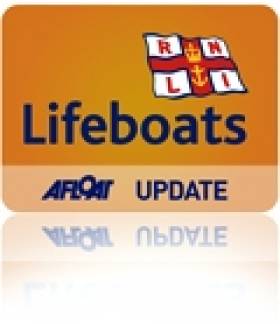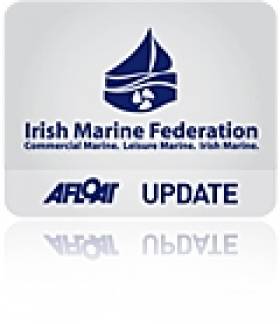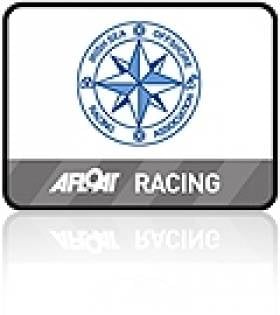Displaying items by tag: irish sea
Search for Missing Kayaker Ends After Women's Body Recovered
The search from Lleyn to Morfa Nefyn, Fort Belan and Llanddwyn involved RNLI all weather lifeboats from Holyhead and Porth Dinllaen, two helicopters from the RAF at Valley together with a North Wales Police helicopter and Coastguard Rescue Teams from Aberdaron, Porth Dinllaen and Llandwrog. It resumed after a red Avocet kayak, like the one used by missing female kayaker, was found on the beach at Morfa Nefyn on the Lleyn peninsular this morning.
Search Resumes After Missing Kayak Located
Early this morning a red Avocet kayak answering the description of the one used by missing female kayaker, Elizabeth Ashbee, a member of Shrewsbury Kayak Club, was found on the beach at Morfa Nefyn on the Lleyn peninsular. There is no apparent damage to the craft. It has now been confirmed that the craft was the one being used by Ms Ashbee.
The North Wales Police were informed who have now inspected the vessel and the maritime search and rescue operation has now resumed. The family of the missing woman has been informed.
Holyhead RNLI all weather lifeboat was asked to resume its search, and two helicopters from the RAF at Valley together with a North Wales Police helicopter are conducting a shoreline search in Caernarfon Bay, particularly from Lleyn to Morfa Nefyn, Fort Belan and Llanddwyn.
Coastguard Rescue Teams from Aberdaron, Porth Dinllaen and Llandwrog are also engaged in searching the coastline in the Bay.
Holyhead Coastguard have been broadcasting pan signals into area alerting shipping to the resumed search.
The weather on scene is a slight sea, with good visibility and south westerly winds of between 10 – 12 knots.
Ms Ashbee, wearing a dry suit and a buoyancy aid went missing Sunday afternoon in her kayak in poor weather and was last seen heading through rocks at Ynys Feurig, or Starvation Island, close to Rhosneigr. An area of up to 60 square miles has now been covered in the search.
Members of the Shrewsbury Kayak Club have also arrived on scene and are assisting Coastguard units in the search.
Irish Sea Kayaker Feared Dead
A kayaker is feared dead after disappearing in treacherous conditions off the coast of Anglesey on the far side of the Irish Sea. The 53-year-old mother-of-two was separated from four other canoeists between Rhosneigr and Rhoscolyn as they were battered by waves and heavy winds at around 2.30pm on Sunday.
The rest of the party were washed ashore but the woman from Shrewsbury has not been seen since then.
Her disappearance saw a major land and sea search launched with the police and RAF Valley helicopters, three lifeboats and dozens of coastguard officers scouring the area.
They were yesterday joined by a fixed wing aircraft and SARDA search and rescue dogs who were searching the coastline in case she had been washed up injured onto the shore.
The chance of her being found alive was fading with every passing hour but the coastguard said they had not given up hope. More HERE from the North Wales Daily Post.
Sheep Rescued by RNLI
A lifeboat crew rescued a sheep and a seal pup in two separate incidents off Anglesey on the far side of the Irish Sea last week.
Moelfre RNLI lifeboat crew helped the sheep after it fell 20ft from cliffs onto an isolated island and became marooned for up to two days near Bull Bay. The full report from the Holyhead Mail is HERE.
Related Safety posts
RNLI Lifeboats in Ireland
Safety News
Rescue News from RNLI Lifeboats in Ireland
Coast Guard News from Ireland
Water Safety News from Ireland
Marine Casualty Investigation Board News
Marine Warnings
Overall ISORA Honours will be Determined by September Race
In an exciting sailing climax for a buoyant ISORA series September's race will determine the overall winner. “Raging Bull”, “Just Enough” and the reigning Champion, “Tsunami” can all take the Wolf’s Head Trophy. Peter Ryan reports on this and news from last weekend's race 8, the M2 buoy race.
The series table is available to download below.
From an entry list of 30 boats, 17 boats came to the line in Dun Laoghaire for the 8th ISORA race. We had one new boat taking part in this race, “Oystercatcher”. The course for the night was: Start – M2 Weather Buoy (P) –Finish.
The forecast for the race looked perfect – 10-12 kts South west. It was expected that the fleet would complete the 54-mile course with no problem. However, as usual, this is not what happened!!! While all boats completed the course, the winds were far from perfect.
The race was started by Peter Beamish, Commodore of the Royal Alfred Yacht Club and Paul McCarthy. The wind at the start was 16kts – south west. This gave a dead run to the M2. The fleet started off the line with spinnakers. As the course was a dead run, the fleet broke into two gybes. Twelve boats heading north towards Howth head while five boats heading out towards Kish. All of a sudden a big hole appeared around the five boats and sat closely by for over a hour while the north fleet headed over the horizon. It was not until the north fleet was a dot on the horizon did the wind fill in and the five boats headed off towards M2. The wind had backed making the leg a broad reach. The wind also increased to 23 knots as the fleet approached M2.
“Roller Coaster” was the first to round M2 with the remainder of the fleet following in procession. It seemed like the return leg would be a simple fetch back to Dun Loaghaire. However, the wind was having none of this. There were several massive wind shifts and wind speed variations all through the leg. Shifts in the order of 60 degrees were experienced as the fleet got into Dublin Bay.
“Roller Coaster” took line honours, 1st Overall and 1st in Class 1. “Team Windmill” took 2nd Overall and 2nd Class1. “Raging Bull” took 3rd Class 1. “Big Hillie Style” took 1st Class 2 and 3rd Overall. Newcomer “Oystercatcher” took 2nd in Class 2 while “Just Enough” took 3rd Class 2.
The next race is on the 11th September, the James Eadie Race from Pwllheli to Howth. The Overall ISORA Championship will be determined by the outcome of this race. “Raging Bull”, “Just Enough” and the reigning Champion, “Tsunami” can all take the Wolf’s Head Trophy.
Roller Coaster Takes M2 Buoy Race
There was a great turnout, but not 28 boat as earlier reported, and despite the flukey conditions experienced by some yesterday, the M2 buoy race from Dun Laoghaire was a highlight of the ISORA series. It was a second win for Rollercoaster this season, she also won in July (HERE). Results attached.
Big ISORA Fleet Gathers for M2 Buoy Race
- Dinah
- Dublin Bay
- Just Enough
- Lula Belle
- ISORA
- National YC
- irish sea
- English Mick
- Quite Correct
- Galileo
- African Challenge
- Lancastrian
- Tsunami
- Rebellion
- Orna
- Madam Wen
- Rollercoaster
- Raging Bull
- Miss Scarlett
- Team Windmill
- First of September
- Finnigans Wake
- Windshift
- Mojito
- Adelie
- Gwawr
- Yahtzee
- Legally Blonde
- Katanca
- Oystercatcher
- Obsession
- Sarnia
Ireland's First Irish Sea Marine Leisure Conference Planned
The Irish Marine Federation in its role as lead partner in the Interreg Programme, irish-sea.org, is currently working on the following projects. Executive Steve Conlon gives the following update to afloat.ie:
Marine Leisure Conference:
A conference to assist marine leisure companies to survive the current downturn on both sides of the Irish Sea is currently being planned. A number of high level speakers will be engaged to give advice on how to survive the recession and to bring forward development ideas to assist growth once the economies on both sides of the Irish Sea recover. The exact details of the speakers and the content is still being developed so if you have any suggestions for speakers or subjects to be covered please contact Steve Conlon. We intend this to be a seminal event of major importance to the industry so to ensure the maximum value can be gained for our members your input into the content and the context will be invaluable.
Coastal Communities:
The establishment of a number of Coastal Communities around our coasts to boast the marine leisure industry and to ensure that maximum number of marine leisure companies can benefit from the Interreg Programme. Two new coastal Communities about to get underway, Tralee Bay and Waterford/East Cork.
National Maritime Spatial Plan:
The Coastal Communities will also ensure that marine leisure becomes fully integrated into the national Maritime Spatial Plan when it is developed through contributing to a coastal audit of all marine leisure activities. Through our partners in South Wales, The Pembrokeshire Coastal Forum will assist us to produce an Integrated Coast Zone Policy for marine Leisure. This will be delivered through a number of workshops around the coast.
Marine Festivals and Events:
We have published the Social Economic Study into the value of the Volvo Dun Laoghaire Regatta: Copies of the study are available from Steve Conlon. The study provides an insight into the spend per boat, the tourism aspects of the event and also the visitor spend. Dun Laoghaire Rathdown County Council is using some of the data collected for another project that they are conducting into the development of a new brand image for the Town of Dun Laoghaire. The total value of the regatta is put at €2.4 million.
Irish-sea.org is also conducting a similar study for the Town of Wicklow who held a Sailfest in conjunction with the Conway Round Ireland Race. This study is still being compiled and the results will be published later in the Autumn. The Interreg Programme worked with both Wicklow Sailing Club and the local Wicklow Chamber of Commerce on the event and the study. Approx 10,000 people visited the town during the 3 days of the festival.
The Fenit based Coastal Community held a successful Seabreeze Festival as part of the Round Ireland Powerboat race. The Interreg Programme assisted the Community with several aspects of the event.
Business Training:
Several marine leisure businesses have benefited from the business training that is available through the County Enterprise Boards. If you wish to be involved in this activity please contact Steve Conlon.
Marina Management Training:
Irish-sea.org has been working with the British Marine Federation/Yacht Harbours Association to bring a number of courses to Ireland. We had hoped to run an "Intermediate Marina Managers" course in Ireland this year but this has now been but back until the spring of next year. The BMF will run a full Certified Marina Managers Course in Ireland in the Autumn. If there are any members who have the pre-qualifications for this course please contact Steve Conlon as the programme would like to assist as many of those who do qualify to participate. The BMF have chosen Ireland as the location to run this international course in competition with a number of other locations. Ireland came out tops in every respect from the well run marina facilities that they visited, travel access and transfer, conference and hotel facilities. Ireland as a venue came out tops in almost every criterion tested so from a marine leisure tourism perspective the holding of this prestigious course in Ireland may help put us on the map.
Contact: [email protected]
Roller Coaster Takes Overnight Race in a 'Virtual Calm'
From an entry list of 27 boats, 13 boats came to the line in Dun Laoghaire sailing for the 7th ISORA race writes Association Commodore Peter Ryan.
We had two new boats taking part in this race, “September Song” and “Windshift”. The course for the night was: Start – Muglins (S) – North India (P) – Muglins (P) – Finish. The whole race was going to be sailed against a foul tide.The forecast for the night looked perfect – 10kts South west and increasing during the night. It was expected that the fleet would be back in Dun Laoghaire soon after midnight. However this is not what happened!!!The race was started by Peter Beamish, Commodore of the Royal Alfred Yacht Club and Paul McCarthy.
The wind at the start was 14kts – east south east. This gave a beat to the Muglins. The wind direction was a perfect beat to North India. However, when the fleet was off Bray Head, the wind veered to a south west, favouring those boats who risked sailing under Bray Head.The fleet was well bunched as it rounded North India. “Roller Coaster” was the first to round with “Tsunami” snapping at it’s heels about 50m behind. The return leg was a tight reach with the wind decreasing.“Roller Coaster” led the fleet past Muglins and into Dublin Bay.
At this stage the fleet had become well spread out but “Tsunami” managed to keep up with “Roller Coaster”. After it rounded the Muglins it fell into the Dalkey Island “Hole” and “Tsunami” took advantage of this and passed it by sailing out into Dublin Bay.
This advantage was short lived when “Roller Coaster” again passed “Tsunami” at the back of the pier in a virtual clam before crossing the finish line at 03:23. “Tsunami” slunk across the line just over one minute behind “Roller Coaster”. The next boat to finish was “Lula Belle” over 80 minutes behind. The last boat finished at 06:01.“Roller Coaster” took line honours, 1st Overall and 1st in Class 1. “Tsunami” took 2nd Overall and 2nd Class1.
New comer “September Song” took 3rd Overall and 1st Class 2. “Rebellion” took 3rd Class 1 while “Lula Belle” took 2nd Class 2 and “Finnegan’s Wake took 3rd Class 2.The next race is on the 21st August with the ISORA / RAYC / Lee Overlay Day Race to the M2 buoy. Also, on the Welsh side, there will be a Day Race from Pwllheli on the same day.


























